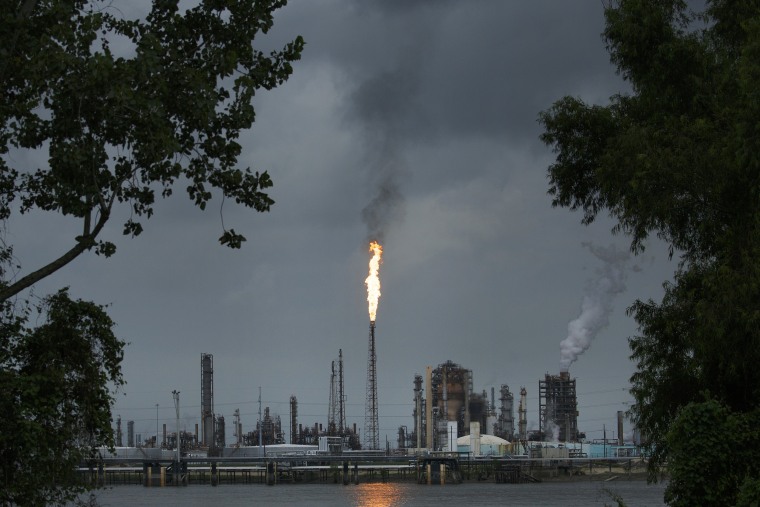The Biden administration on Friday announced plans to significantly tighten regulations against methane emissions from domestic oil and gas drilling.
The new measures were unveiled at the United Nations Climate Change Conference, known as COP27, in Sharm el Sheikh, Egypt, and are part of the administration's broader commitments to the global community to tackle the climate crisis.
The regulations aim to curb a key source of pollution and harmful emissions from fossil fuel companies. They require oil and gas operators to use remote sensing technology to identify and address large methane leaks and routinely monitor all well sites.
The Environmental Protection Agency said the proposed standards would reduce methane from the oil and gas sector by 87% below 2005 levels.
“The United States is once again a global leader in confronting the climate crisis, and we must lead by example when it comes to tackling methane pollution — one of the biggest drivers of climate change,” EPA Administrator Michael Regan said in a statement.
Methane accounts for a much smaller percentage of global greenhouse gas emissions than carbon dioxide (CO2), but methane’s molecular structure makes it able to trap more heat in the atmosphere per molecule than CO2. This makes methane a significant driver of short-term warming.
The United Nations Environment Programme estimates that methane is responsible for more than 25% of global warming since pre-industrial times.
Microbes emit the gas in low-oxygen environments, but methane is also released into the atmosphere when coal, oil and natural gas are mined and transported. In the United States, oil and natural gas operations are the nation’s biggest industrial source of methane, according to the EPA. The sector also generates toxic air pollutants such as benzene.
The strengthened regulations call for companies to reduce emissions from gas flaring and establish a "super-emitter response program" that allows federal regulators and approved third parties to quickly identify and respond to major leaks.
Environmental groups praised the announcement, saying it helps reinforce the country’s commitment to fight climate change.
“Cutting methane pollution from the oil and gas industry is one of the most immediate and cost-effective ways to slow the rate of global warming while improving air quality and protecting public health,” Jon Goldstein, senior director of regulatory and legislative affairs at Environmental Defense Fund, said in a statement.
Caitlin Miller, an attorney at the environmental nonprofit Earthjustice, said the proposed standards will help hold fossil fuel companies accountable.
“Methane and other pollutants released by oil and gas facilities threaten the health of frontline communities and contribute to our longstanding history of environmental injustice,” she said in a statement.
The Biden administration announced its plan to reduce methane emissions in November 2021 at the last U.N. Climate Change Conference. The EPA spent the past year soliciting public comments and feedback from the industry.
The American Petroleum Institute, an oil and gas lobby group whose membership includes Exxon Mobil and Chevron, appeared to support the proposed rules, saying in a statement that it will work with the EPA on a standard that is “cost-effective, promotes innovation, and creates the regulatory certainty needed for long-term planning.”
“Federal regulation of methane crafted to build on industry’s progress can help accelerate emissions reductions while developing reliable American energy.” Frank Macchiarola, the group’s senior vice president for policy, economics and regulatory affairs, said in the statement.
The EPA said it will accept public input on the new measures until Feb. 13 and will issue a final rule in 2023.
Last year, the U.S. and the European Union launched the Global Methane Pledge, which aims to reduce the world’s methane emissions by 30 percent by the end of the decade. The pledge includes 130 countries, though some key polluters such as Russia, China and India have not signed on to the agreement.

